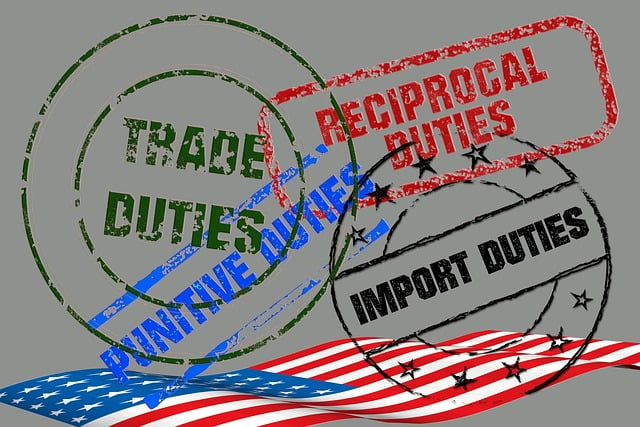Creative Solutions: Adapting Your Side Hustle Products to Avoid Tariffed Materials

The Impact Of Tariffs On US Ecoomy
Did you know that tariffs can turn your side hustle dreams into a financial nightmare faster than you can say “import tax”? In a world where the cost of materials can fluctuate like a caffeinated squirrel, adapting your products to avoid tariffed materials is not just smart—it’s essential. Let’s dive into some creative solutions that can keep your side hustle thriving without breaking the bank.
Understanding Tariffs
Tariffs are like that uninvited guest at a party who eats all your snacks and leaves you with a hefty bill. They are taxes imposed on imported goods, and they can significantly increase your production costs. For side hustlers, this means you need to be savvy about your materials. Here’s what you should know:
- Impact on Pricing: Tariffs can inflate your costs, forcing you to raise prices or absorb losses.
- Supply Chain Disruption: Tariffs can lead to delays and shortages, making it harder to get your products to market.
- Market Competition: If your competitors find ways to sidestep tariffs, you could be left in the dust.
Finding Alternative Materials
Think of alternative materials as the secret weapon in your side hustle arsenal. They can help you dodge those pesky tariffs while keeping your products fresh and exciting. Here are some ideas:
- Local Sourcing: Look for materials produced domestically. Not only do you avoid tariffs, but you also support local businesses.
- Recycled Materials: Get creative with upcycled goods. They can add a unique touch to your products and are often cheaper.
- Substitutes: Research materials that serve the same purpose but aren’t tariffed. For example, if you make jewelry, consider using resin instead of imported metals.
Innovative Product Design
Sometimes, a little creativity can go a long way. Rethink your product design to minimize reliance on tariffed materials. Here’s how:
- Modular Designs: Create products that can be easily assembled with locally sourced components. This not only reduces costs but also appeals to eco-conscious consumers.
- Digital Products: If you’re in a bind, consider pivoting to digital offerings. E-books, online courses, or printable designs can be created without physical materials.
- Customization: Offer personalized products that allow customers to choose materials. This can create a unique selling proposition while avoiding tariffs.
Leveraging Technology
In the age of technology, there’s no shortage of tools to help you adapt your side hustle. Here are some tech-savvy solutions:
- 3D Printing: This innovative technology allows you to create products on-demand, reducing the need for large inventories and imported materials.
- Online Marketplaces: Platforms like Etsy or Amazon Handmade can help you reach a wider audience without the overhead of a physical store.
- Supply Chain Management Software: Use tools to track your materials and costs. This can help you identify tariff-free options quickly.
Case Studies: Success Stories
Let’s take a look at some real-life examples of entrepreneurs who turned tariff challenges into triumphs:
- Eco-Friendly Candle Maker: Faced with rising costs due to tariffs on imported wax, she switched to locally sourced soy wax. Not only did she save money, but her eco-friendly angle attracted a new customer base.
- Handmade Jewelry Designer: When metal tariffs hit, she pivoted to using resin and natural stones. This not only avoided tariffs but also gave her pieces a unique flair that customers loved.
- Online Course Creator: After realizing that physical products were too costly, she transitioned to offering online workshops. This move not only eliminated material costs but also expanded her reach globally.
Marketing Your Adaptations
Once you’ve made changes, it’s time to shout it from the rooftops! Here’s how to market your new, tariff-free products:
- Storytelling: Share your journey of adaptation with your audience. People love a good story, especially one that highlights creativity and resilience.
- Social Media: Use platforms like Instagram and TikTok to showcase your new products. Visual storytelling can create buzz and attract customers.
- Collaborations: Partner with other local businesses to cross-promote your products. This can help you tap into new audiences without additional costs.
Final Thoughts
Adapting your side hustle to avoid tariffed materials is not just a necessity; it’s an opportunity to innovate and stand out in a crowded market. By exploring alternative materials, rethinking your product design, leveraging technology, and marketing your adaptations effectively, you can turn potential setbacks into stepping stones for success. So grab your creative hat and get to work—your side hustle deserves it! 🚀



